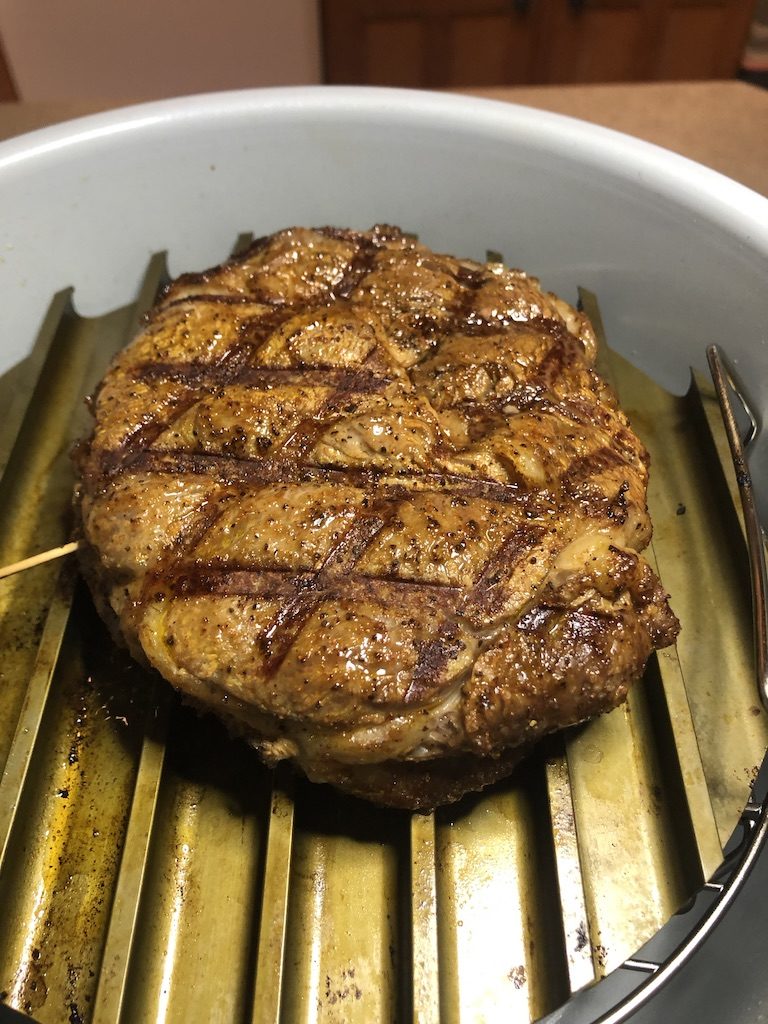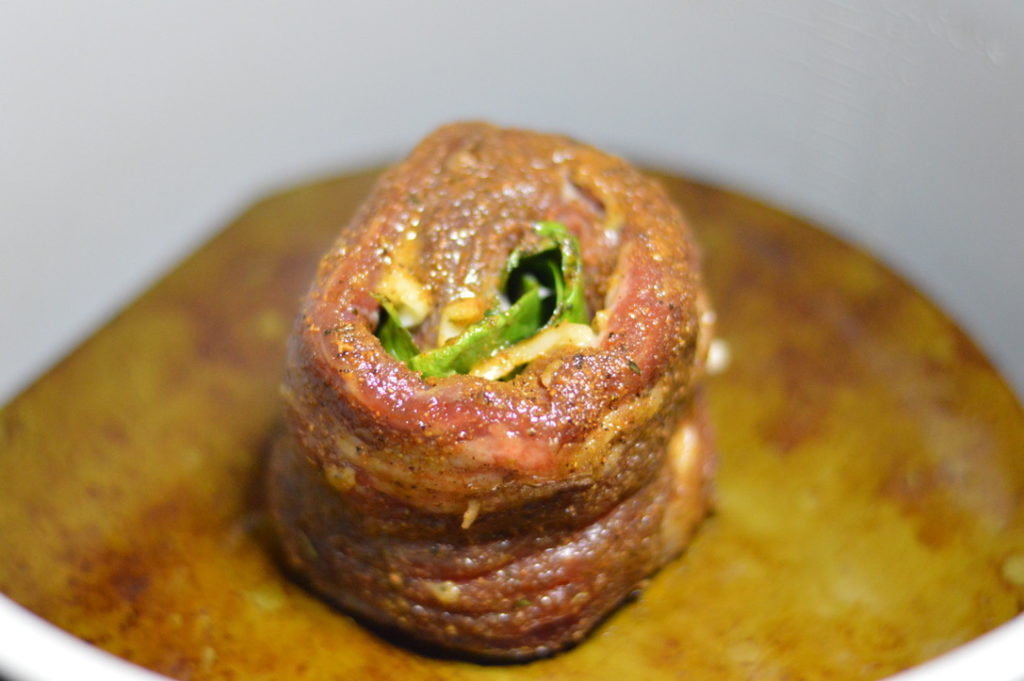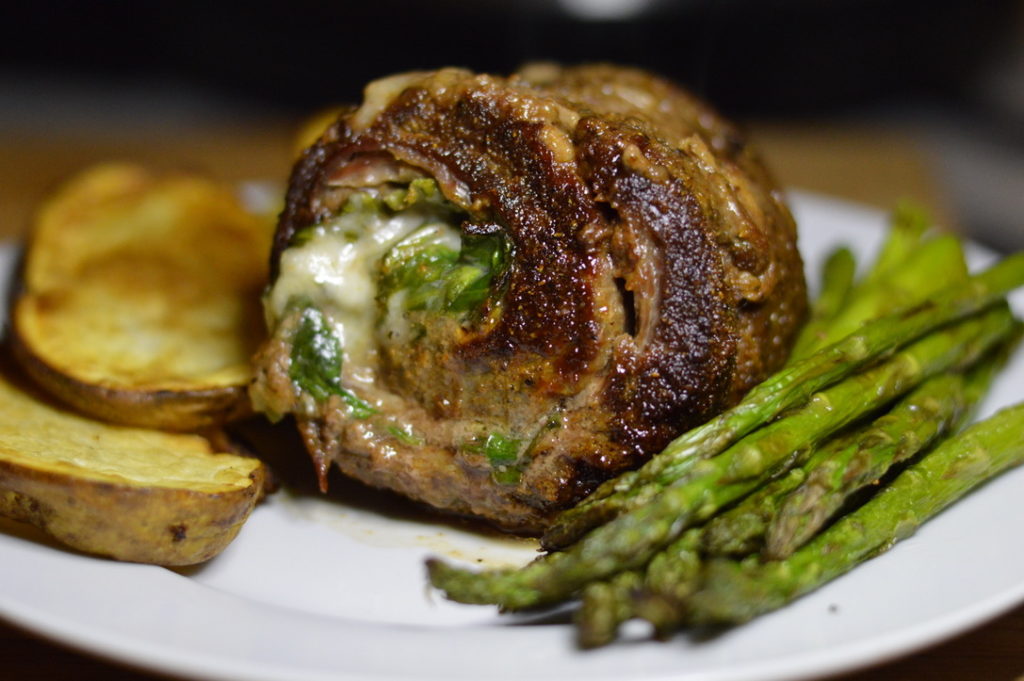
Ribeye steak cooked in an Air Fryer
Have you ever heard of carryover cooking?
If you love cooking in your air fryer, you've probably learned that to cooking meat to the right temperature isn't completely black and white.
Why? Because of a little phenomenon known as carryover cooking.
What is carryover cooking?
The question you may be asking is, what exactly is carryover cooking, and how does it affect the food you cook in your air fryer?
Carryover cooking is when your food is taken from the (active cooking) heat but continues to cook under heat it's already retained.
Here's a rundown on how to adjust your cooking method in this carryover cooking guide.
Let's get started!
How does carryover cooking affect the cooking process?
After you have pulled your meat out of an air fryer, it does not mean that the cooking process is over.
The reality is that cooking may continue for at least 20 minutes more, and that's true even if the meat is kept at room temperature.
I'd encourage you to use a good thermometer and test this for yourself. When your food is done cooking insert a digital probe thermometer and allow the food to rest. You will be amazed by how the food continues to cook even when off of the heat.
So, if you're trying to cook your steak medium-rare, carryover cooking may cause the steak to reach the temperature of medium-well.
The reason for this is that air that is hot will end up cooking the outer layer of food. Then, the outside part of your food will cook the area inside of it through conduction.
Let's say you plan to cook a thick steak or a roast in your air fryer. A beef roast is mostly water and a smaller percentage of fat, and both of these items are great insulators. Therefore, this type of meat will collect heat rather slowly, then transfer the heat slowly as well.
Probably the best explanation I've read about this is from ThermoWorks in an article they wrote here.
Cooking Temperature and Meat Thickness
A couple of factors impact carryover cooking in an air fryer: your cooking temperature and how thick your meat is.
The hotter your temperature, the greater the carryover effect will be compared with if you cooked at a much lower temperature. That's because, with a lower temperature, heat will take longer to migrate to your food's center area.

Also, thin cuts of meat have little carryover since they don't have a lot of time to collect large amounts of heat. However, the opposite is true for thicker cuts. So, it's best to remove a steak from the heat at a lower temperature to accommodate the carryover effect.
The shape of the Food
Another important factor that affects carryover cooking is how your food is shaped.
Food shaped like a sphere is most susceptible to the carryover cooking effect. For instance, it is less likely to cool off. This is because its surface area is relatively small for the given volume.
An example of a spherical food item cooked is a turkey that has been stuffed. In light of this, it is best to avoid stuffing a turkey the next time you prepare Thanksgiving dinner. Also, cook your turkey to a little lower temperature for the best results.

How do I fix this cooking in my ninja foodi grill? Is there a certain number of degrees under Med-rare for which I should aim? Why does the ninjas NOT account for that?!
Frankly- it's not a specific problem to the Ninja grill, it's all cooking. However, the Ninja has such a small area it's super-efficient and very powerful. The only way to account for it is to monitor it with a thermometer for the entire cook. That and as an example... Say you want a steak to be on the plate at 135F. Cook to 125 or whatever you want and when it hits 135F you serve/eat it immediately. Sadly, it's a bit of trial and error. I did a thicksteak the other day and cooked to 117F hoping for it to settle in at about 135F before serving. Carryover took it to 150F! My dinner guests were not impressed 🙁